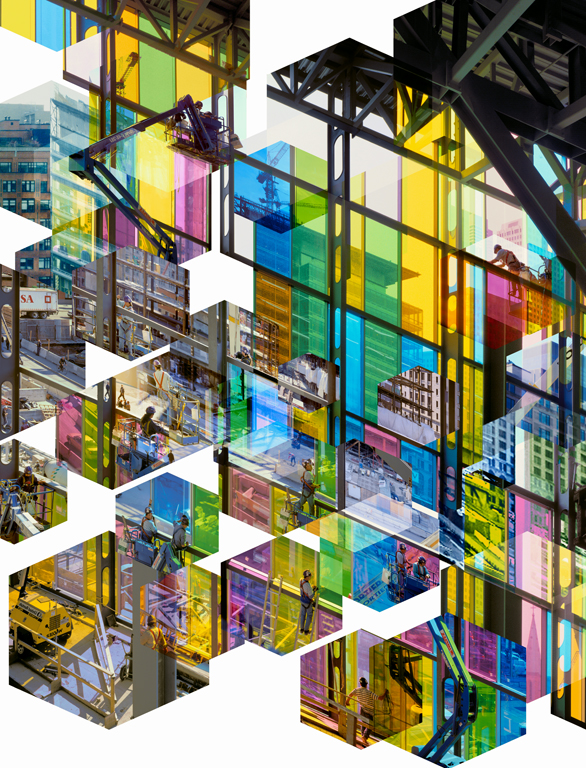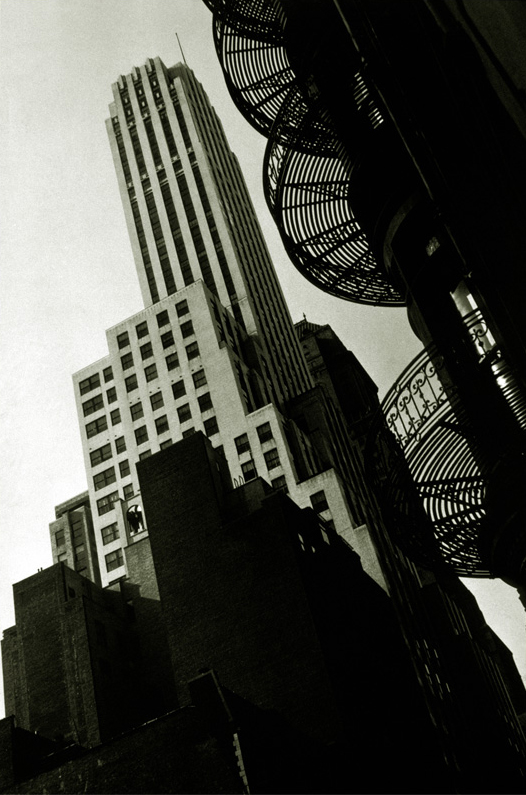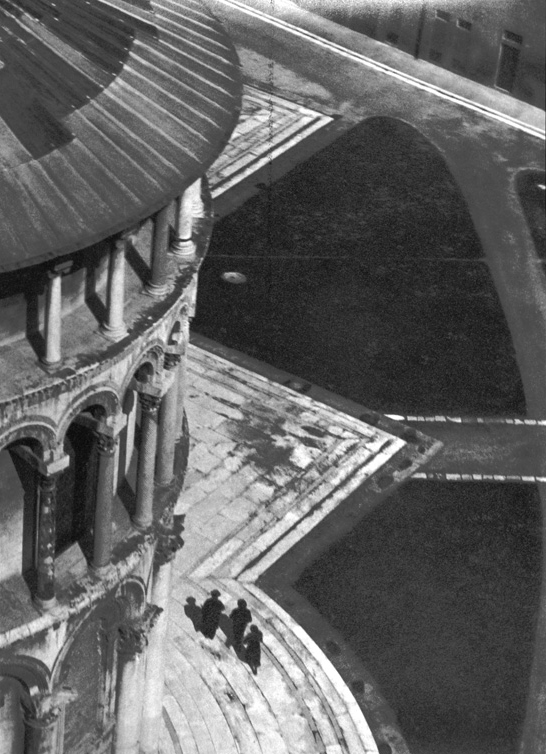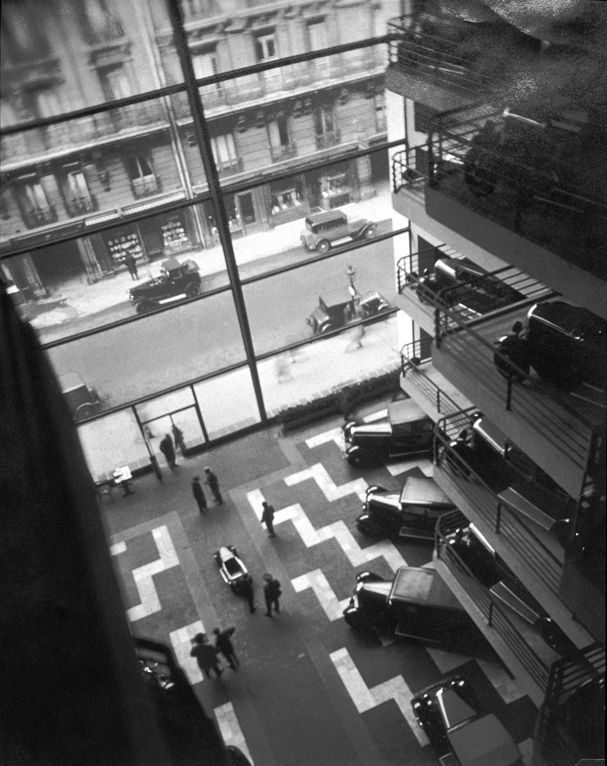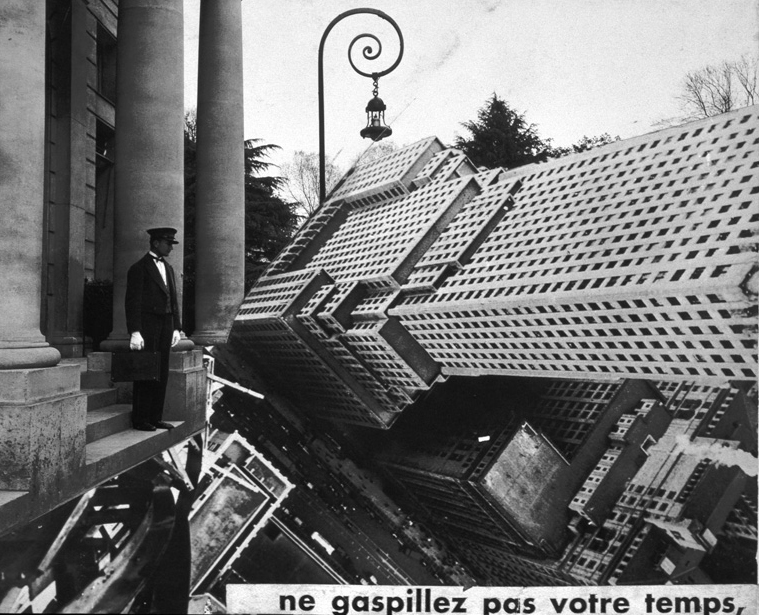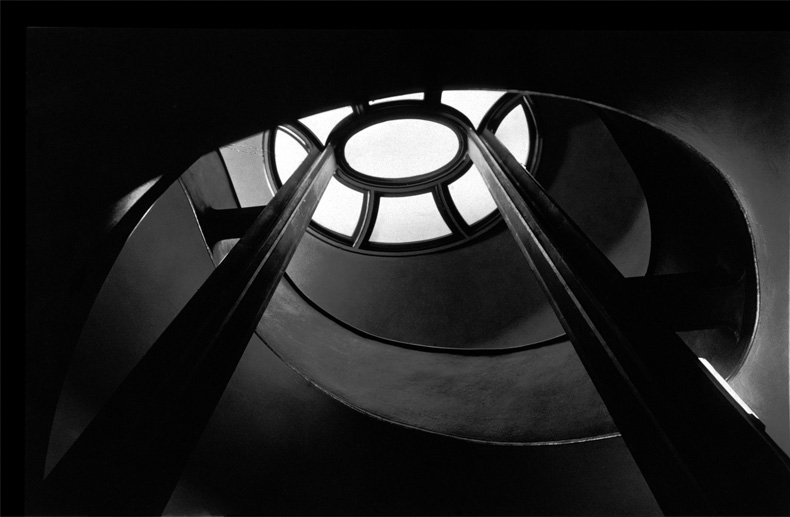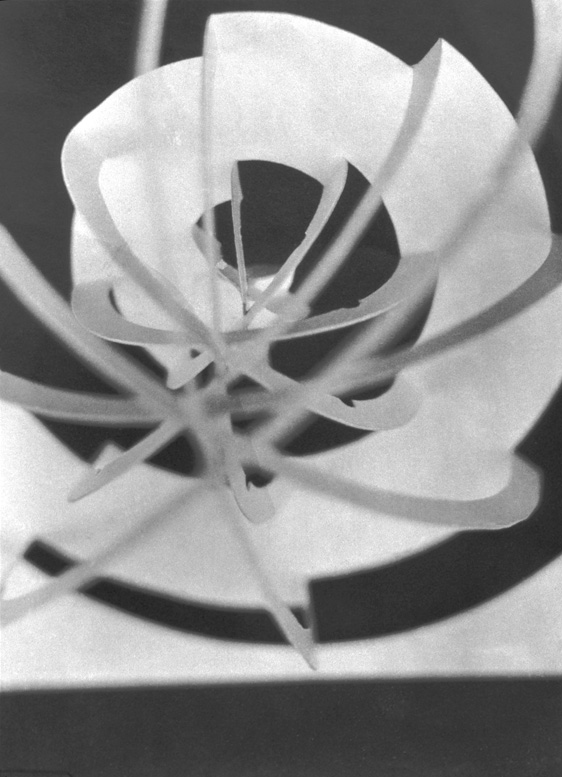[Spring 2003]
Hubertus von Amelunxen: The decision to fit the space into a hexagonal schema led to dividing it up strictly, in a way that recalls the organic structure of a beehive. In his wonderful book The Life of the Bee1 Maurice Maeterlinck characterizes the hive as a “mathematical city” where time and space – work, in other words – are subjected to a perfect organization. The hexagon is an ideal structure for the optimal utilization of cell space (or a relational space), and for the possibilities of the architectural addition of parallel cells. This optical division recalls Buckminster Fuller’s Dymaxion House, also hexagonal, from 1925–27. At the time, he chose the hexagonal form for technical reasons to do with mass production. Fractal Palace applies the hexagonal organization of “work” to the structure of a scopic field, with each of the divided perspectives repeating elements of the whole but with each repetition introducing changes.
Alain Paiement: I worked with the challenge – by focusing on optics – of creating a correspondence between the construction of a steel-and-glass surface and the process of its reconstruction as a photomontage. A dual construction. the photomontage is composed of juxtaposed, superimposed, and overlapped digital images. It joins the foreground (the construction of the glass wall) with the background (the urban landscape, also under construction). To unite these two planes, I employed long focal lengths, which made it possible to bring foreground and background closer together by foreshortening the perspective.
The hexagonal modules enabled me to incorporate the rifts more dynamically. During shooting, I moved continually along the glass wall, laterally and on the upper floors. Most of the vantage points I chose were possible only temporarily, since they have now been filled in or closed off by opaque elements. I also took a number of shots from scaffolding. The shift of view and the use of varied focal lengths were designed to produce jolts and dislocations of continuity in the recomposition of the glass wall. I aimed the camera from above, from the side, and from below, always in response to the images chosen from the CCA collection. The juxtaposition and interpenetration of these fragments consequently produced instances where the perspectives were logically impossible, inevitably creating rifts.
I worked on the basis of an oblique projection of the surface of the glass wall, from a 30-degree angle. So, the hexagonal frames are parallel to the inclined verticals and horizontals of the metallic grid. The correlation between the angles of the hexagonal frames and those of the steel structures photographed enable there to be a direct formal closeness between the construction of the image and that of the architecture. The oblique juxtapositions and superimpositions simulate another depth, more ambiguous than what you would get with an orthogonal grid.
At first glance, the open and unfinished nature of the work, along with the random element it is the result of, produces a chaotic effect. But almost immediately one perceives the oblique grid and then the vectorial links between the hexagons. By looking in closer detail, one grasps the structures of the moments I photographed, with these little men assembling the walls of glass. And what happens with the hexagons is that, at this distance, the three-dimensional illusions become more effective. The transparency of the multiple crystal-like facets creates sites of three-dimensionality. They cause you to lose a sense of the picture plane, then the foreground of the glass wall, through the effects of prismatic diffraction of the coloured surfaces.
HvA: There is nothing more formal than allegory. It is like a scopic procedure, approaching space by way of “allegorical prisms” – the abstraction of repetition and reproduction. The hexagonal structure also reflects the temporal structure of the collection; once you take images from the collection, you are left with something like communicating vessels, which you put together regardless of the temporal punctum and modulate in order to construct a narrative. There is a reorganization of time through space in your image as you digitally insert different temporal structures, layers of time, palimpsests. At first glance, we do not see it; we only notice it when we see people reappearing in different hexagons. This temporal structure defines an entirely different space from the space one would actually have seen.
AP: For the past several years, my work has been focused more on notions of time than of space, but nevertheless the temporal dimension, the aspects related to archaeology, to successive layers, and to duration remain, so to speak, subject to a spatial puzzle. In Fractal Palace I bring together various aspects of my previous explorations, in which the subject and the manner of representing it were questioned, indeed confounded and even confronted by one another. Method, system, prosthesis . . . all the ways of photographically mapping a given subject are prescribed by the subject itself. The glass wall-image construction is not finished. During the period when I was photographing the glass wall, there were changes every day, and this temporarily infinite transformation is what I fundamentally retain of the subject here . . .
HvA: If we consider the hexagon as a seme, each hexagonal structure would encompass a range of possibilities, connections and virtual organisms, and within each element perhaps there would even reside a sort of peripetal power that turns the meaning of the image around as soon as we have altered the relationship of the hexagons.
AP: The gaze associated with the reading gives rise to slight displacements in the image. It weaves links that could be called syntagmatic. In other words, the gaze begins to make not only formal links between the image’s modules and zones, but also narrative links, by taking in the figures who are in the act of building – the men who reappear in various hexagons, on either side of the glass wall, on a ladder or a crane. I took the pictures over several days. When we see the same figure over again, we read his various gestures and postures and connect them from one hexagon to the next through a linguistic structure. Let me clarify that.
Take do-it-yourself books or magazines. Very often, they show in separate images all the stages of building a project – a kitchen counter or an office shelf, for example. They present a sequential story, like a short photo-novel. In Fractal Palace the narrative division is comparable to cutting these illustrative vignettes apart and mixing them up so as to undo the action, undo time, or at the very least relativize the linear reading, from cause to effect, from one frame to the next. At that level, I like to think of photomontage in linguistic terms.
The whole constitutes a musical score composed of links, dislocations, rifts, silences, and punctuations. It is crossed by a very strong element at the right of the picture, with the triangular structure that starts at the roof above the glass wall. It is like a phrase into which allegories and metaphorical references may be read, but which may also be read in the formal first degree. I conceived it musically, with a development that can accelerate or decelerate. In looking carefully, you can see effects of compression. Even on the optical level, some of the image processing suggests slower moments, linked to light and the prism effects, and others are more linked to action, more vectorial, including the men in the act of assembling or carrying glass elements. These instants are narrative nodes in the network of glass and steel. Other image processing is motivated more by the effects of superimposing fragments of coloured glass and the specifically pictorial qualities of cubist painting. All these aspects are inseparable within the process of composition.
I was looking recently at a reproduction of a painting by Fernand Léger that shows this kind of double construction, with figures who are erecting a structure but who are also in the process of constructing the painting. There is really a link between the object represented and the mode of representation. Fractal Palace is constructed like a modern painting, in the sense of the modernist program – or “non-program” rather – which will allow the unpredictability of an action to determine the next action, which will then trigger the next one, and so on. So, assemble the painting gradually, then decide, intuitively, that it has come to an end. Which does not mean finished. It is just where I have stopped – I could have continued, but I let the beholder bear its possible continuation . . .
HvA: Fractal Palace is an image that could perhaps have been done as a montage, but it is an image specifically conceived and executed digitally.
AP: Digital imaging offers several different possibilities. With photomontage, using prints, or even working with all sorts of dark room tricks, you could obtain a number of effects that are quite close to certain effects produced digitally. Analogically, if I wanted to keep the logic of the photomontage I worked out on the computer, I would have had to plan my photo shoots more carefully in order to achieve a better alignment of the structural elements that appear in the image with the hexagonal structure that frames the modules.
I photographed in square format (6 x 6 cm) and inserted a hexagonal outline into the viewfinder, which served as a template for framing. Nearly all the shots are done by positioning the oblique edges of my polyhedron parallel to the horizontal lines of the glass wall. Using telephoto lenses, I can reconstruct the background by reducing the discrepancy of scale between the two planes. But this is not always possible; sometimes it is a little out of focus. After digitalizing the images, I completely relativized the perspective and realigned the grid of the glass wall. Nonetheless, if you haven’t constructed the angles you want fairly closely as you are taking the pictures – that is, framed them adequately so that the architectural structure and the structure of the hexagons coincide – then when you try and realign the axes that appear in the images on the computer, you end up with literally incredible distortions. In reconstructing, I am always concerned with objectivity or documentary precision, and in that respect the digital process allows me to correct the perspective in strict conformity with an oblique grid. The dematerialization of the image makes possible an elasticity of each module and modifications of perspective that are impossible to achieve with the techniques of analogical photography. The different subtractive and additive ways of interweaving images renders the transparency into which the images dissolve more complex. With digital imaging, you lose the manual quality of the cutting, obtaining unpredictable combinations in which the units assembled are sometimes lost to the benefit of the whole, in the light of the cathode ray screen where they float. The way I assemble the modules is already related to the result: a photomontage floating in a space we call empty because it is white . . .
This text is excerpted from “The optical hive,” a conversation between Hubertus von Amelunxen and Alain Paiement, published in the catalogue tangent e – Alain Paiement (Montreal: Canadian Centre for Architecture, 2003).
Since his very first pictorial and installation works, then in photographic research initiated in 1985, Alain Paiement has explored and systematically renewed the modes of representation of space and time, in an approach that is located at the crossroads of the pictorial, photographic, architectural, and cartographic traditions. His works have been widely shown in Canada and in Europe. Alain Paiement lives and works in Montreal.
Hubertus von Amelunxen, Senior Visiting Curator at the Canadian Centre for Architecture, is scientific director of ISNM International School of New Media, in Lübeck, Germany. He has a doctorate in Romance languages and literature, has held various professional academic positions, and was a founding director of the Forum – Centre for Interdisciplinary Project Studies at the Muthesius Academy for Art and Design in Kiel. He is the author and publisher of several books on new media and on the history and theory of photography. He has also curated numerous international exhibitions, most recently Tomorrow For Ever – Photographie als Ruine, Krems-Duisburg, 1999–2000.

